shades of darkness
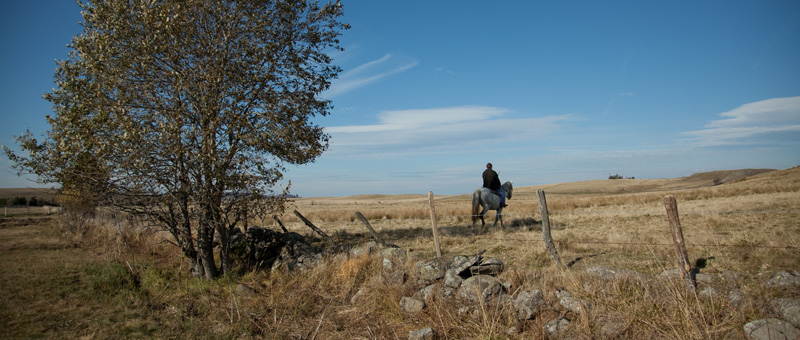
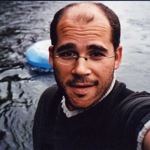
Hichame alaouie
Upon exiting a screening of John Shank’s “ The last Winter” , we were impressed by the beauty of the landscapes, interiors in faint light, the perfect harmony of light and shadows, shades of darkness. The impression of having contemplated a series of paintings, warm colors of the earth, comes to you when you think back of the story of young cattle rancher caught in the torments of profitability. Reminding us that this feeling of nature captured in his rudeness had already invaded us in another film “ au cul du loup “ we held a meeting with the cinematographer of these two features: Hichame Alaouié.
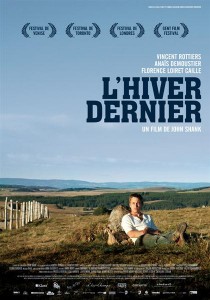
Cinergie: What is the job of a DOP ?
Hichame Alaouié: A cinematographer is responsible for the films image, that is to say, the lighting, the framing, to be the eye in the camera. In the case of The last Winter, I was responsible for the light and the frame.
In general, and in the case of The Last winter, it’s you who decides the frame or the director?
H. A. : It varies greatly from one film to another, but in this case, we worked on a breakdown in advance with John, the director, by devising shot design or sets . Once on the set, it is never as we had imagined, so we adapt. Some directors leave more room for improvisation, while others, conversely, prefer to storyboard. Lecapitaine is still the director., even if one did more films than him, this is his work, this is where he wants to go and how do it. We, we are never just at his service. In these cases, we know the position of the camera in advance and the focal length to use. For the filming of “The last Winter”, we prepared a working basis, and then we adapted to reality.
The location scouts are very important for a cinematographer?
H. A. : Yes! And this movie is based around its sets, they are vitally important in their choice in relation to narrative, but also technically. They had to be lit and filmed as we wanted it, and they had to allow for moving equipment around. Anna, the production designer, has transformed some elements, but we relied on the natural settings. John and Anna sought the farm among those of Aveyron. The one that was chosen for its stables had a barn as the story demanded it. The relationship to the farmer was also very important, because it was a working farm, and a film crew takes up space. This is even more difficult on a farm with animals in which the life and work continues. We had to find people interested and quite flexible in their organization of every day life. You can have the best scenery in the world, if you have real problems with practical people, you can not do what you want. We went there with John, Anna and the assistant director to check. The film takes place over several seasons, we could not just do any sequence at any time.
Did you go with a camera?
H. A. : No, with my eyes and my light meter. Rarely do I shoot on a scout, I prefer to take pictures and notes.
Taking pictures and coming up with the shots.
H. A. : That’s it. Coming up with the shots, choosing those that interest us both indoors and outdoors, considering the light. We based a lot on natural light, but one can not film everything like that. On a scout I watch how the location is lit, and from there I asses my needs and desires to tell the story in pictures. The scenario tells a story, but in my opinion, and especially in this film, the light also tells one.
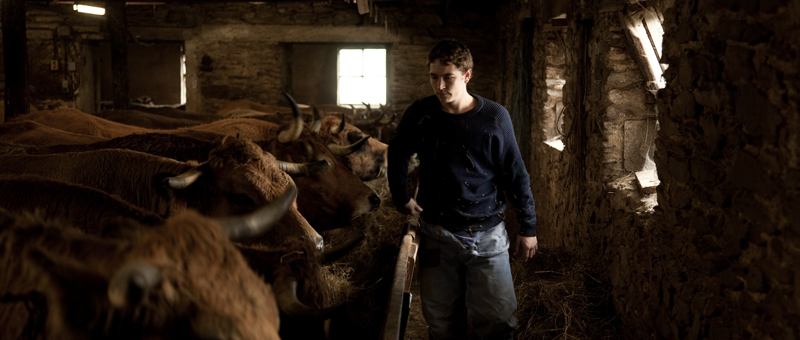
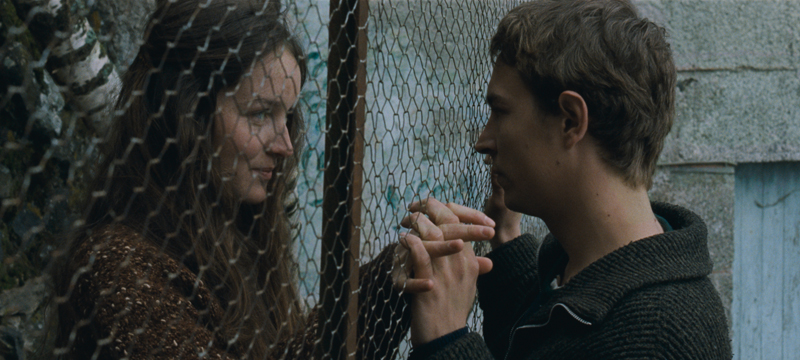
The film goes through several seasons, you went back to the location several times during the year?
H. A. : John went in winter and spring. We shot a first period of 3 days for the beginning of the film. We did not see the farm in the snow as we hoped to see it after six months. The day the snow came, we adapt. I use this word a lot for this movie, but it is true that we must learn to “adapt” to reality. On this film, this is especially true because of the animals, nature and the climate.
You’ve had discussions with the director about the staging, the tone of the film?
H. A. : It was not really detailed discussions about the tone, but more watching film clips or referencing to paintings, photographs. Not one in particular, but rather on a case by case base, in order to prepare certain sequences. I have been working with John for some time, I worked on his shorts. I had the chance to follow the evolution of the script. I received the first version three years before the shoot. It’s a film we wanted to be real and natural. We did not really any tests, we just started from a place and given the light that was there, sometimes altering it to make it more expressive. I know how I want the image to look, but I start from reality. We did not have the means to light the farm, so it was necessarily linked to sunlight.
Do you consider this film to be close to you?
H. A. : At the visual level, this is a movie close enough to me. Nature is something that I like filming, as is natural light, but I have done many different things and I still hope to do so. The interest of being a director of photography, is also that, by adapting to different environments, to renew its look and way of working on each project. After all a good image is an image that sticks to the film, although there are always more personal subjects or worlds that we feel related to than others.
Is there a shot that you’re particularly proud of ?
H. A. : There is a shot which I find very beautiful and is indicative of the film. It’s a sequence at the end of the film, after the animals were seized. Johan goes home and eats soup. It’s just a static shot, quite dark. It is a scene in the script where it was written: “Inside kitchen, no specific time.” We did a few days using a small crew, without electric power, using natural light for this shot among others. One does not notice it, fortunately, but it was sunny outside, one of the brightest days we ever had. There is no light source, there is no electricity, we just used some diffusion frames, flags and played with the diaphragm. It’s a shot that tells something about the character, and meets the indication in the script by John “no time”. The shot includes many elements that I like and that are real, that is most important thing. One can make the best shot in the world, if it is not in its place, it is useless. I love working with natural light, and making it work for me.
What does it mean making the light work?
H. A. : The sun was directly in the window. There was a great beam light entering the room. Making the light work for you, is to transform it, cut it, diffuse it, soften it, possibly changing the color temperature, making it cooler. Use what is available and model it without using large light sources. It’s more in the adaptation and refinement.
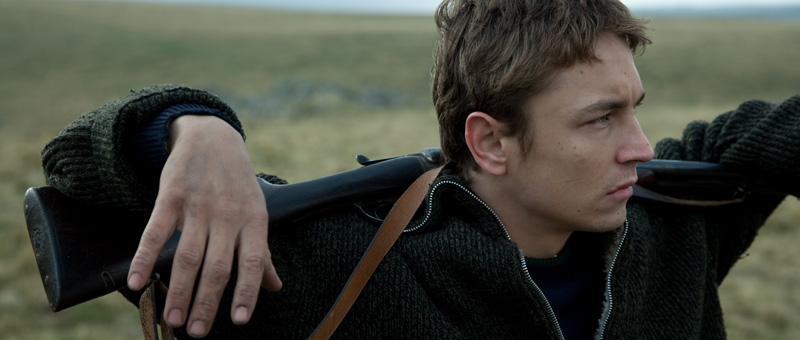

Is there a scene that was very difficult to achieve?
H. A. : I think of a scene that is not included in the film. During the evening with all people of the village, we see the children leave for the forest. There was normally a sequence where we followed them, and we see one of them telling a story to the youngest children in the forest. For a cinematographer, when we say “sequence outside – night forest” it is always tricky. We need to see something, but at the same time, we must feel the night and darkness.
And the sequence at night with the fire ?
H. A. : It was pretty simple really. There was a large fire, fed with gas for a constant force, it was a big installation, but once in place, it was pretty simple. These are sequences that are rather dark, and it’s always a bit tricky not to go overboard and keep the same overall mood. The whole film is a bit on the edge. My idea was that this is the light that turns to the dark, into the darkness. The film begins in the summer and ends in winter. With John, we decided to go far in the dark, and the boundary between the “too dark” and “not enough” is very delicate.
You shot on film?
H. A. : Yes, of 35 mm. It was an important issue for John and me. All the films we made together, were 35 mm. The texture, the lighting, the image is very important. Production understood, and they fought for imposing film. It was not a foregone conclusion for reasons of money, but it would not at all been the same movie, we would not have had the same colors, the same sensations in digital, I am sure .
The film is more sensitive to nuances in the dark?
H. A. : It is more nuanced, it is not more sensitive – because today in digital, we can work more in low light – but when we look at the shades between light an dark, there is more nuance on 35, in my opinion. It falls more easily into something too dark on digital. On a face, for example, the range in tones is much more nuanced, there is a greater range of colors and lighting on the skin, on 35. In digital, it’s black and then, suddenly, it’s white. In 35, there was a range in between. In the tones of the film, in the colors of nature, between the fall, summer, winter, it’s important for me to have this palette of shades.
Did you have any references to determine the mood?
H. A. : We have talked a lot about There Will Be Blood (Paul Thomas Anderson), The Assassination of Jesse James by the Coward Robert Ford with Brad Pitt (Andrew Dominik) and Days of Heaven (Terrence Malick). These films influenced us for different parts of “The last Winter”. We talked about the scene of the burning of oil wells in There Will Be Blood for the sequence of the barn burning. There is also another film referenced for the nights : The Spirit of the Beehive (Victor Erice). But again, these are starting points, John does not come in saying ‘I want that! “. In paintings, we looked at several different things, the contemporaries as well as the old, mostly for the dim interiors. It’s a film where there are many sequences in twilight. It is the end of the world, and the beginning of a new one with our character who does not want to change the world. I found it significant that the light should also be in between the day and the night. It is unclear, one does not know what time it is. We tried as much as possible to film at twilight without adding anything, it’s not always easy. That’s why we looked at Days of heaven, 3/4 of the film was made in between the day and the night. It is important in this film. Throughout, we tried to hold on to it as much as possible, both in summer , autumn and in winter. There is a sequence in the barn, it’s light outside, but inside there is some tungsten light. These are environments I love, on the edge. The level of energy on the set becomes important, it has to go fast, when the light is ready, we did not have much time, we could not do a lot of takes. It induces an energy, whether it is with the actors, or the camera. This is something that I love, and that lent itself very well to this film.
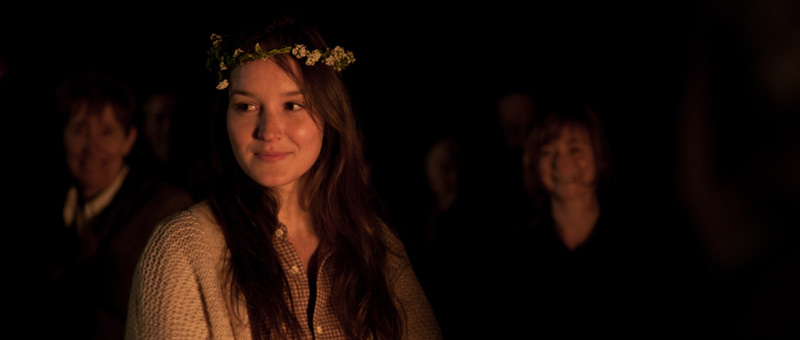
You were the dop on “The last Winter” and the film of Peter Duculot, “Au cul du loup”. In both films, we find the same atmosphere in the way of presenting landscapes and interiors.
H. A. : Yes, but they are very different! The first one was on film and the other digital. You can make similarities because both films are in scope 2.35, which results in the way of filming nature. It is true that there are some similar interiors. But I never compared them. It is perhaps in the way of framing the landscapes …
When you started your studies, you already knew you wanted to do cinematography?
H. A. No, not at all. I hesitated between editing and cinematography. I said I would go for cinematography because it was outdoors, and staying in the editing room was not for me. This is not necessarily a very good reason, but honestly, I really discovered something at INSAS. I was already good at filming, I had a sensitivity for framing, for the camera, but as for lighting, it was all pretty abstract for me. I did not know very well what it meant. The school opened my eyes, its been an endless learning process since. I did not start out to be a cinematographer. I thought it might be smart to learn one technique and go out with a small crew, and be my own cinematographer. I did a lot of documentaries, but the image in fiction was a real discovery. I thank INSAS for that, and my teachers at the time. I have great gratitude to them.
You paint, you take pictures?
H. A. : I have done watercolor, a long time ago, but I do not think I have enough talent for it. Before becoming a director of photography, I was a camera assistant and, at that time I took a lot of pictures. I don’t so much anymore, but thanks to cinematography I keep the flame awake.
Interview by Dimitra Bouras, transcribed by Elizabeth Halleux.
Published with the kind permission of Cinergie.be.
